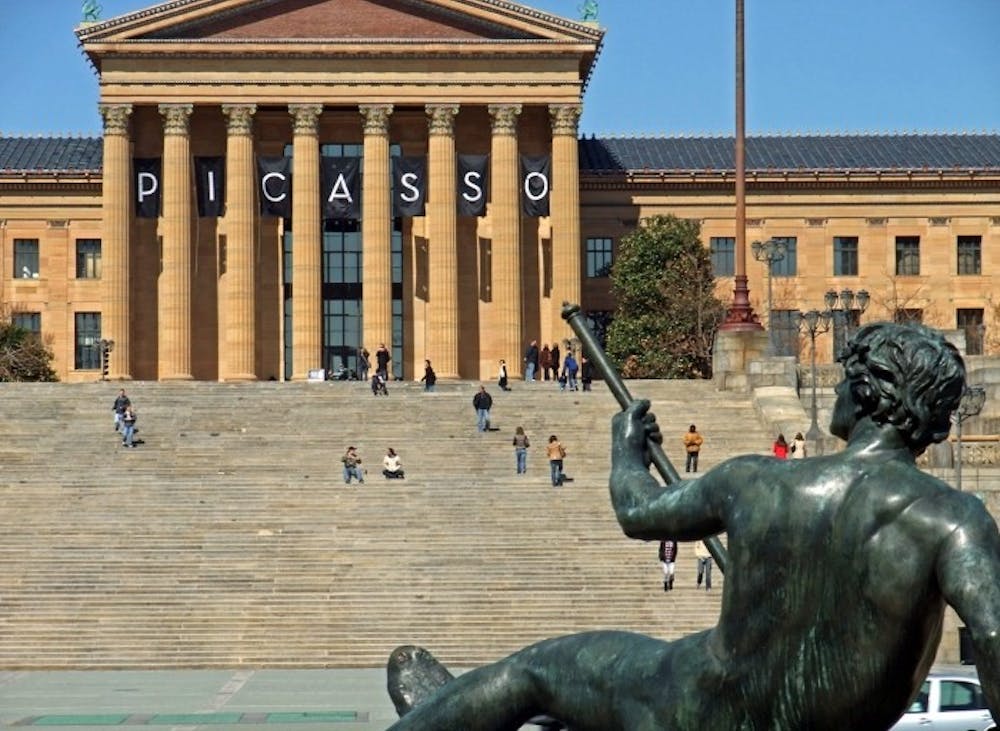The Philadelphia Museum of Art (PMA) can be considered a landmark in this city. It’s the home of the Rocky Steps. It’s the place where the Eagles ended their victory parade. It’s the place where we (or at least most of us) dressed up for the gala that one night during NSO. But for me, the PMA was my reprieve. When I received a yearlong membership to the museum as a gift, I made it a goal to go twice a month and like most, I was first drawn to the museum’s extensive collection of impressionist artists, which soon expanded to the modern, the American, and the early religious arts. There was, of course, undeniably more than enough heavyweights from the late nineteenth to mid–twentieth centuries. Picasso, Dalí, Monet, Van Gogh, and Renoir adorn the walls of over half of the first–floor galleries.
But the PMA has far more to offer than works by these select few. On the wall of a side room in the wing of European art from 1100–1500 hangs a small portrait of an archangel, one of the pinnacles of Duccio di Buoninsegna’s renowned Maestà. Not exactly a household name, but an Italian painter of thirteenth–century Siena, Duccio was widely considered one of the fathers of Western art.

Wikimedia Commons // CCO
In the same area of the museum is an impressive collection of Netherlandish religious art in the 1400s. Among this collection is Saint Francis of Assisi Receiving the Stigmata, a small 5x5 inch painting by Jan van Eyck, who was known for his skillful use of oil painting in portraying minute and realistic details. To see this piece in person is nothing like seeing it over a computer screen; it’s in the smallest of details that the artwork can truly be understood. No one ever says much about van Eyck when there’s mention of Picasso, but in the realm of art, his work was almost just as much a watershed moment as was Picasso’s.

Wikimedia Commons // CCO
And then there is the Modernists, for those who don’t particularly like Impressionists. Two artists stand out in particular: Marcel Duchamp and Cy Twombly. Of the former, who was influential in both Cubism and Dadaism, the PMA houses the largest collection of work from him. The centerpiece of the collection, Fountain, was a controversial piece of its time. It was a urinal. Just a urinal. But it was also probably Duchamp’s most noteworthy piece because of the way it challenged the traditional way of thinking about artistic representation.

Wikimedia Commons // CCO
Controversial in a similar way, Twombly is the quintessential modern artist that provokes visitors to make that classic remark, “How is this considered art? My five–year–old could do that.” Maybe it’s the divisiveness that attracts me, but truth be told Twombly is one of my favorite modern artists, and the backroom of the museum that holds his series, 50 Days at Iliam, is one of my favorite places in the museum. The work consists of what seems like scribbles from afar, but the abstraction of scribbles forces the audience to consider the relationship they communicate between artist, medium, history, and meaning. Whether you hate them or love them, these Twombly masterpieces always elicit a strong reaction.
The museum also has a vast collection of American art, taking advantage of the history behind Philadelphia. One of the most prominent artists displayed in the American wing is Thomas Eakins, a Philadelphia–based realist painter best known for his application of Realism to the American lifestyle. His star piece, The Gross Clinic, alternates homes between the PMA and the Pennsylvania Academy of fine arts and is currently residing at the latter. But when the 8–foot–tall painting returns, it is most certainly a must–see for anyone with even the slightest curiosity in the style of American art.

Wikimedia Commons // CCO
These are all only a taste of what the PMA has to offer beyond the household names of art history that we all know and love. It’s easy to go straight to the Monet paintings, because they’re what you’re familiar with. But next time you go, I’d challenge you to wander into a gallery where everything is unfamiliar. After all, it’s the unexplored territory that is often the most exhilarating.







